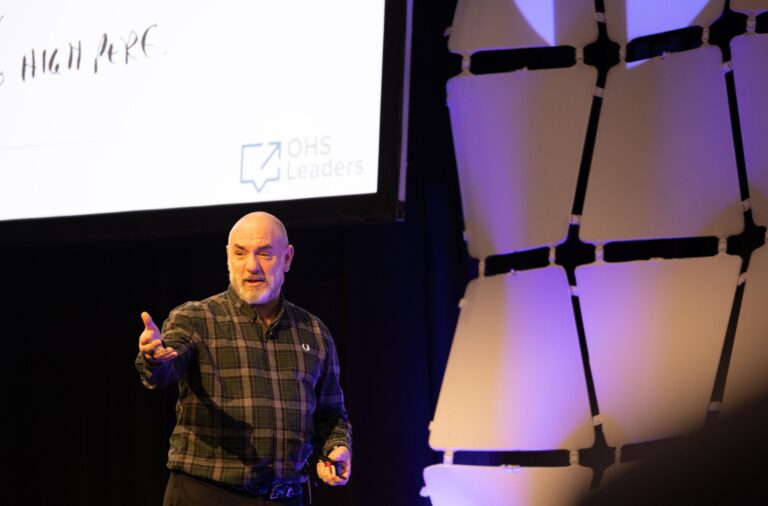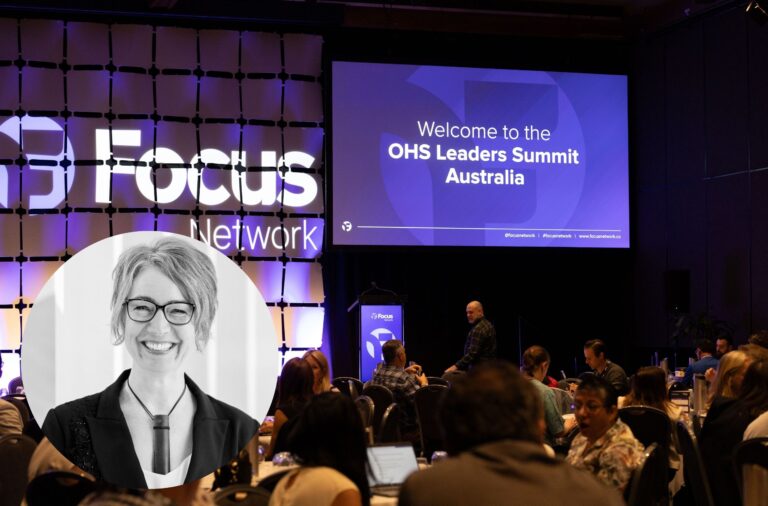
Psychosocial risk is no longer a secondary concern – it’s a primary challenge for modern businesses. With new regulatory frameworks emerging across Australia and globally, the spotlight is now firmly on how organisations investigate and respond to psychological hazards. And according to experts, many current approaches aren’t just outdated — they’re actively harmful.
A recent panel, at OHS Leaders 2025, EHS, legal, and organisational safety leaders unpacked the evolving nature of psychosocial investigations. The message was clear: organisations must move beyond compliance checklists and into strategic, system-wide transformation.
Below is a summary of the key discussion points from the panel, which included Ben Evans, Health & Safety Technology Strategist at HSI Donesafe, Dr. Gemma Maisey, Principal Advisor Occupational Health at Rio Tinto, Katherine Morris, Partner at Norton Rose Fulbright, and Mark Oostergo, CEO & Principal Psychologist at Australian Psychological Services.
Ben started the panel with an important frame:
“Psychosocial risks should be seen as a cornerstone of your overall safety strategy. If you’re addressing physical safety but ignoring mental wellbeing, you’re missing half the picture. It’s not a ‘nice to have’; it’s essential for the health of your organisation.”
When Investigations Create Harm
The irony at the heart of the discussion was this: the very processes designed to protect employees — investigation frameworks, reporting channels, HR protocols — can sometimes cause the very harm they aim to prevent.
“So many prosecutions we’re seeing have come out of what used to be seen as typical HR processes,” said Katherine, a legal expert on workplace safety. “Performance management reviews, restructures, misconduct investigations — if done poorly, these can all become sources of psychosocial risk.”
These risks aren’t theoretical. Regulators have already taken enforcement action in cases where delays in investigations, lack of support for the subject, or remote-only assessments were deemed breaches of duty.
“There is a legal expectation now. If you’re not addressing psychosocial risks in your workplace, you could be exposing yourself to litigation, reputational damage, and regulatory fines,” she added.
“In one case, the delay alone was identified as the cause of psychosocial harm. That’s how closely process and outcome are now linked,” Katherine noted.
As legislation around workplace mental health continues to evolve, organisations are increasingly expected to take proactive measures. By failing to address psychosocial risks, you could be putting your organisation at significant legal risk. It’s no longer a matter of “if” but “when” you will be required to act.
The Leadership Confidence Gap
Psychosocial investigations differ fundamentally from physical safety cases. They often involve complex interpersonal dynamics, ambiguity, and hazards that accumulate slowly over time. For many leaders, that complexity creates paralysis.
“Our leaders were really honest,” said Gemma, an EHS leader at Rio Tinto. “They told us, ‘We don’t feel confident leading these investigations. We’re used to black-and-white safety incidents — this is all grey.’”
And that grey area isn’t going away. Psychosocial risks often involve multiple interacting factors — workload, role clarity, bullying, isolation — that evolve over months. This demands investigative models that account for nuance and variability, not just compliance to a checklist.
“We had cases where three separate investigations were happening for one incident — HR, Health and Safety, and our Business Conduct Office,” Gemma added. “Each used different systems, and no one had the full picture.”
But despite the challenges, effective psychosocial risk management begins with leadership. Mark highlighted:
“If your leadership isn’t ‘bought in’ and actively supporting mental health initiatives, they won’t gain traction. Leadership is key to building a culture that supports the mental wellbeing of your employees.”
This insight underscores a crucial point: leadership plays an integral role in shaping workplace culture. If mental health is not prioritised at the executive level, your organisation will struggle to create meaningful change. Leaders need to lead by example, openly support mental health initiatives, and ensure that all employees feel supported in their journey toward better wellbeing.
Outdated Models Are Breaking Down
One of the most striking takeaways was how traditional investigative structures are no longer fit for purpose. HR-led investigations have historically focused on substantiating claims and assigning consequences. But that model falls short when it comes to understanding and addressing root causes of psychosocial harm.
“Those processes tend to look for blame, not understanding,” said Mark, a workplace psychologist. “But what if that behaviour was a symptom of broader psychosocial risks — poor job design, poor culture, lack of support?” He continued, “It doesn’t excuse it, but it might explain it. And that’s what prevention is about — looking upstream, not just responding after the fact.”
Gemma agreed.
“You can’t simply apply a generic policy across the board and expect it to work. Psychosocial risks are highly individual. What stresses one person may not affect another, and vice versa.”
This is where the real challenge lies. Understanding and addressing psychosocial risks requires a tailored approach that accounts for the unique needs of your workforce. For example, some employees may struggle with workplace bullying, while others may feel the effects of a high-pressure environment. It’s vital to listen to your employees, understand their concerns, and implement strategies that cater to different needs.
A New Model: Person-Centred, Trauma-Informed
So what does good look like? The panel agreed: it’s not just about better forms or policies — it’s about adopting a trauma-informed, person-centred model that recognises the emotional and psychological toll investigations can take on all parties involved.
“Trauma-informed approaches have been standard in healthcare for years,” Mark explained. “But in investigations, they’re still new. It’s not just how we interact with people — it’s the entire process that needs to change.” Mark went on to add, “There’s often too much focus on the complainant, and not enough on the respondent. Both need to be treated with care, with choice, and with psychological safety in mind.”
The Role of Cross-Functional Collaboration
One of the consistent themes was the need for greater collaboration between HR, Safety, Legal, and Operational leaders. Siloed approaches increase duplication, delay, and risk, especially when data sits in different systems.
“We had the same incident stored in three different databases,” Gemma shared. “Where’s our single source of truth? Where’s the opportunity to learn?”
A pivotal moment in Rio Tinto’s own journey was a cross-functional process-mapping session.
“We brought HR into the room and mapped out the current process. Only then did it become clear how much duplication and re-traumatisation was happening. That shared understanding was the turning point.”
Regulators Are Watching — and Acting
The pace of regulatory enforcement is picking up. Improvement notices are being issued more frequently — and more proactively. Katherine noted that cases are now being built around what were once considered minor administrative flaws.
“Failure to offer a support person. Requiring a complaint in writing. Delaying communication. These things have all been cited as breaches of psychosocial duty,” she said.
And it’s not just fines — enforceable undertakings totaling over $1 million have already been issued, and new notification regulations are coming online across jurisdictions.
The Path Forward from Reactive to Proactive
The panel challenged organisations to lift their maturity — not just by introducing a new template, but by embedding psychosocial thinking into their systems. That includes safety investigations, return-to-work processes, and performance management frameworks.
“Often, psychosocial risk gets raised in other processes — not just as standalone incidents,” said Katherine. “If you’re not embedding psychosocial thinking into those moments, you’re missing key risk points.”
Mark added that real change starts with asking better questions:
“Instead of just ‘Was the allegation substantiated?’ ask: ‘Were there other risk factors present?’ ‘Was harm preventable?’ ‘What protective factors were in place — or missing?’”
Enabling Change with HSI Donesafe’s Psychosocial Suite
For leaders trying to operationalize these changes, the road ahead can feel steep. Collaboration, data centralization, new training, new models — it’s a big ask. But the cost of doing nothing is far greater.
That’s where HSI Donesafe’s Psychosocial Suite steps in.
It’s built to help organisations:
- Run trauma-informed investigations consistently across teams
- Unify data from HR, Safety, and Incident Reporting into one platform
- Identify risk patterns early, even from unsubstantiated or repeated concerns
- Report clearly to the board and regulators with audit-ready documentation
- Empower leaders with the tools and confidence to act in grey areas
As psychosocial risk continues to rise — and regulators raise the bar — organisations can’t afford to rely on outdated models or disconnected systems. The solution isn’t more paperwork — it’s smarter systems, clearer processes, and people-first design.
Because in the end, how we investigate tells our workforce everything about what we value — and how we lead.
Learn more about the critical shift towards psychosocial wellbeing.
Share:



